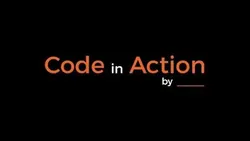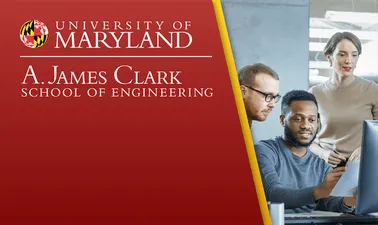
Genomics: Decoding the Universal Language of Life 
Discover the power of Genomics and its ability to decode the universal language of life in this revolutionary course. Learn how to unlock the secrets of the genome and its implications for the future. ▼
ADVERTISEMENT
Course Feature
![]() Cost:
Cost:
Free
![]() Provider:
Provider:
Coursera
![]() Certificate:
Certificate:
No Information
![]() Language:
Language:
English
![]() Start Date:
Start Date:
Self Paced
Course Overview
❗The content presented here is sourced directly from Coursera platform. For comprehensive course details, including enrollment information, simply click on the 'Go to class' link on our website.
Updated in [March 06th, 2023]
What is a genome? A genome contains all of the information that a cell needs to develop, function, and reproduce itself, and all the information needed for those cells to come together to form a person, plant, or animal. Genomes contain an organism’s complete set of genes, and also the even tinier genetic structures that help regulate when and how those genes are used. The ability to regrow a torn ligament, the clues that might predict the onset of mental illness, the nutritional potential of crops, and even the history of life itself, are all encoded in genomes. By taking this course, you will discover how scientists are deciphering the language of genomes to learn how to develop sustainable food and fuel supplies, improve disease treatment and prevention, and protect our environment. Professor Robinson is the main instructor for this course. In addition, each module features several guest instructors. These guest instructors come from diverse fields of study—biology, physics, computer science, and many others—and pursue diverse research goals, yet they share a common interest in genomic approaches and technologies. The guest instructors include: - Elizabeth (Lisa) Ainsworth, Associate Professor of Plant Biology - Mark Band, Director of the Functional Genomics Facility - Alison Bell, Associate Professor of Animal Biology - Jenny Drnevich, Functional Genomics Bioinformatics Specialist with High-Performance Biological Computing - Christopher Fields, Associate Director of High-Performance Biological Computing - Bruce Fouke, Director of the Roy J. Carver Biotechnology Center - Glenn Fried, Director of the Carl R. Woese Institute for Genomic Biology Core Facilities - Nigel Goldenfeld, Professor of Physics - Brendan Harley, Assistant Professor of Chemical and Biomolecular Engineering - Alvaro Hernandez, Director of the High-Throughput Sequencing and Genotyping Facility - Victor Jongeneel, former NCSA Director of Bioinformatics and former Director of High-Performance Biological Computing - Kingsley Boateng, Senior Research Specialist with the Carl R. Woese Institute for Genomic Biology Core Facilities - Stephen Long, Professor of Plant Biology and Crop Sciences - Ruby Mendenhall, Associate Professor of African American Studies - William Metcalf, Professor of Microbiology - Karen Sears, Assistant Professor of Animal Biology - Saurabh Sinha, Associate Professor of Computer Science - Lisa Stubbs, Professor of Cell and Developmental Biology - Rachel Whitaker, Associate Professor of Microbiology - Derek Wildman, Professor of Molecular and Integrative Physiology - Peter Yau, Director of the Protein Sciences Facility You will become familiar with the course, your classmates, and our learning environment. The orientation will also help you obtain the technical skills required for the course. Genes, genomes, DNA: these words have slipped into our daily news cycles and our awareness, but what they actually mean often remains unclear. In these lessons, we aim to give you, not just the Biology 101 explanation of what a genome is, but a real-life perspective on why you already care about genomics – perhaps in ways you didn’t even realize. Are you interested in where your food comes from, what health conditions you are most likely to develop, what fish will share your aquarium most successfully? Genomes are a key to finding a better answer to these and other everyday questions. You may have seen DNA visually represented in different ways: a twisted ladder, a tangle of string, an array of sloppy X shapes, a row of letters. But what is DNA actually doing, and how does it relate to genes and the genome? How are scientists able to move from studying the physical structure of the genome to understanding its functionality? This module will help you become more comfortable with these ideas. Often, we hear about genes only when something goes wrong – when mutations, mistakes made in the DNA sequence, cause a disease like cancer cystic fibrosis. But what happens inside our cells that leads from a mutation in DNA to the physical symptoms of a disease? Why do some mutations cause positive outcomes, or no change at all? To answer these questions, we take a closer look at how information flows from genes, to RNA, to proteins, to all the physical structures and processes that make up living things. If all the cells in all the tissues and organs of our bodies have the same genome, how is it that they can look so different? How does a hair cell, a white blood cell, or a brain cell know what to do or where to go? The answer can be found by looking beyond the structure of the genome, into the timing of its activities. Recognizing how the information stored in the genome can be used in flexible ways shows us how living things can develop and change over time. You may have heard of "nature vs. nurture" or the modern day response, "nature AND nurture!" But how does "nurture," the environment, act through the genome? Can the biological effects of experience be passed from one generation to the next? And what does all of this have to do with everyday issues, like our physical and mental health? A closer look at two mechanisms that help regulate the activity for genes, epigenetic modifications and transcription factors, provides some answers. The world is a big and sometimes incomprehensibly complex place. Just as no gene in the genome acts in isolation, no living thing on this planet exists in isolation. In this final module of the course, we explore some of the rich, complicated interactions between living things, their genomes, and the world that surrounds them. The University of Illinois at Urbana-Champaign is a world leader in research, teaching and public engagement, distinguished by the breadth of its programs, broad academic excellence, and internationally renowned faculty and alumni. Illinois serves the world by creating knowledge, preparing students for lives of impact, and finding solutions to critical societal needs.
Pros & Cons

Informative and useful content

Challenging assignments

Interesting and motivating videos

Real time research examples

Well designed assignments and quizzes

Graded quizzes restricted for auditors

Poor management and technical issues

No staff to grade assignments

Resetting deadlines when not required

No one to review/grade assignments
Course Provider

Provider Coursera's Stats at AZClass
Discussion and Reviews
0.0 (Based on 0 reviews)
Explore Similar Online Courses

Robotic Process Automation Projects

Modern Product Leadership

Python for Informatics: Exploring Information

Social Network Analysis

Introduction to Systematic Review and Meta-Analysis

The Analytics Edge

DCO042 - Python For Informatics

Causal Diagrams: Draw Your Assumptions Before Your Conclusions

Whole genome sequencing of bacterial genomes - tools and applications

Chemical Biology

Immunology Lecture 17 Complement System


Start your review of Genomics: Decoding the Universal Language of Life